This story from the Australian Aviation archives comes from June 2009, when Owen Zupp took the Brumby LSA on a flight test.
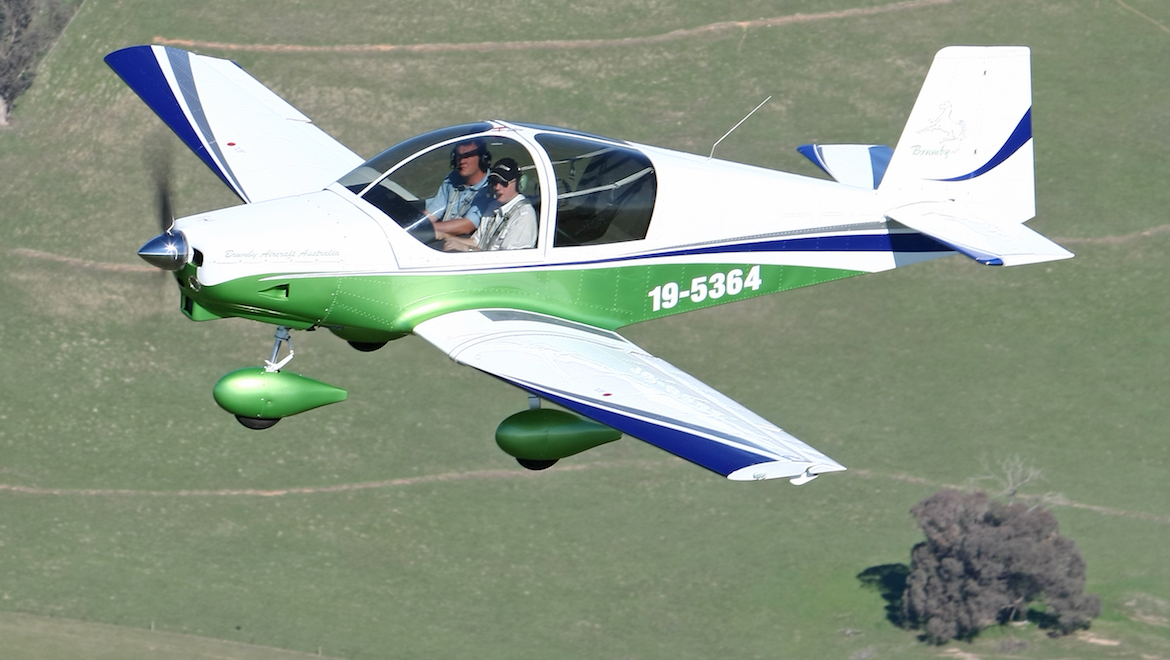
As the various fleets of GA trainers continue to age, more questions than answers seem to arise about the future direction of this category of aircraft. Fortunately, one aircraft is offering a viable solution and best of all, it’s home grown!
I walked along a flightline of GA trainers the other day and they were starting to show their years. Some had a coat of new paint, while others had new interiors or digital radios, but there was no hiding the fact that these aircraft were 30 years old and past their prime.
Some had niggling maintenance issues that detracted from a good day’s flying, while others had faults that threw the day’s entire flight schedule into disarray.
As the new Light Sports Aircraft (LSA) category continues to grow in popularity, PG Aviation in rural NSW is hard at work producing an aircraft that is the best in both worlds; LSA or fully fledged VH registered. It is the Brumby.
Old World, New World
There are Ford men and there are Holden men. Some people like composite, some prefer rivets and sheet metal. Some opt for LSA and others the civil register. Each has their own very valid arguments, but in the end it’s a matter of preference.
The Brumby provides an interesting option as its uncompromising design is able to bridge the category divide.
This is possibly because its genesis lies in the Go Air trainer which first breathed air when LSA was an aviation acronym for the future. The Go Air’s original design and specifications hark from an era of metal, fully certified Beeches, Pipers and Cessnas.
But when recreational aviation came of age and the aviation community began to appreciate this new generation of light, but advanced airframes, the Go Air was well positioned.
With further design work by its creator Philip Goard, the aircraft was able to conform to the requirements of the new LSA category, including the maximum takeoff weight of 600kg. Thus was born the Brumby.
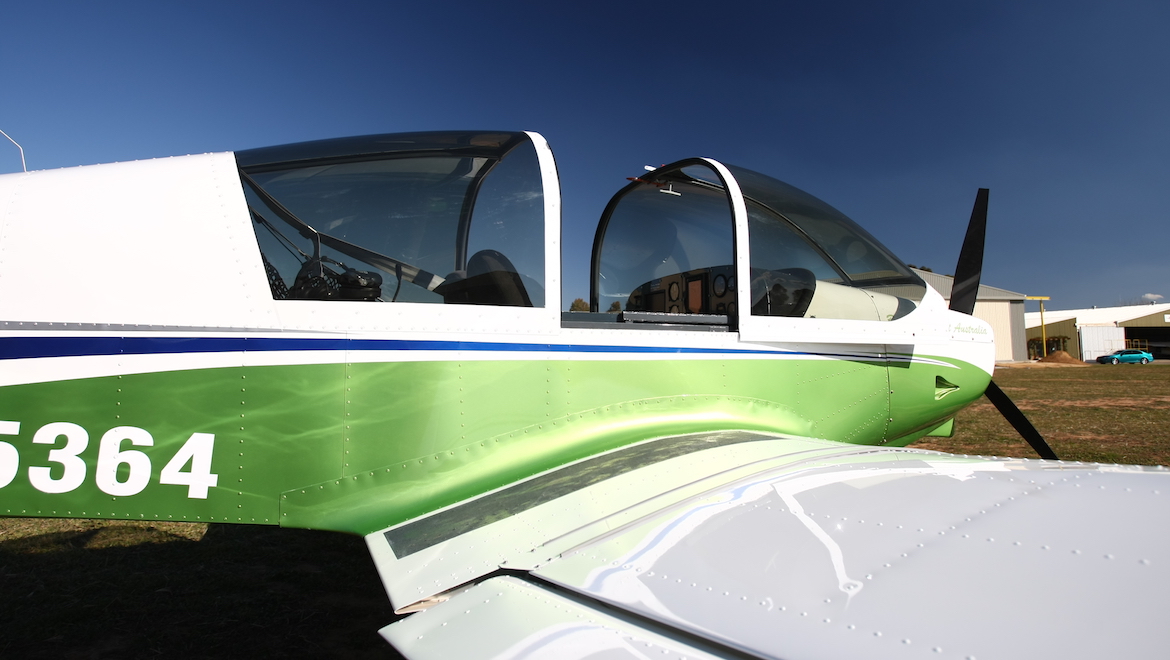
If It Looks Right, It Probably Flies Right
This old adage definitely holds true as you approach the Brumby. It sits compactly, but is well proportioned upon its tricycle undercarriage and its expansive canopy suggests the impressive visibility of a Robin or CT-4. The standard two-bladed propeller has been upgraded in this instance to a three-bladed unit and offers adequate clearance from the ragged grass tufts that litter Australian airfields.
This is not a “big” aeroplane, but it is a substantial aeroplane. Of all metal construction, its spar and undercarriage are built strong as evidenced by those aircraft still in the construction stage at PG Aviation’s Cowra facility.
If anything, some of these components are over-engineered, which is something pilots never tire of hearing. But that’s an incredible feat given that this has been achieved within the rigid weight requirements of the LSA category.
In fact, this aircraft can lift two 85kg occupants and a full fuel load of 120 litres and can’t be pushed out of either end of its Centre of Gravity envelope. Additionally, with six cubic feet of baggage space there is more than adequate flexibility in the payload combinations.
The wing spans only 8.5m and is nicely tapered with the fuel cells occupying the majority of that span ahead of the spar. Furthermore, the tanks are maintenance friendly and equate to little more than rivets and a panel in the event of replacement. This is another welcome trait of this aeroplane – common sense.
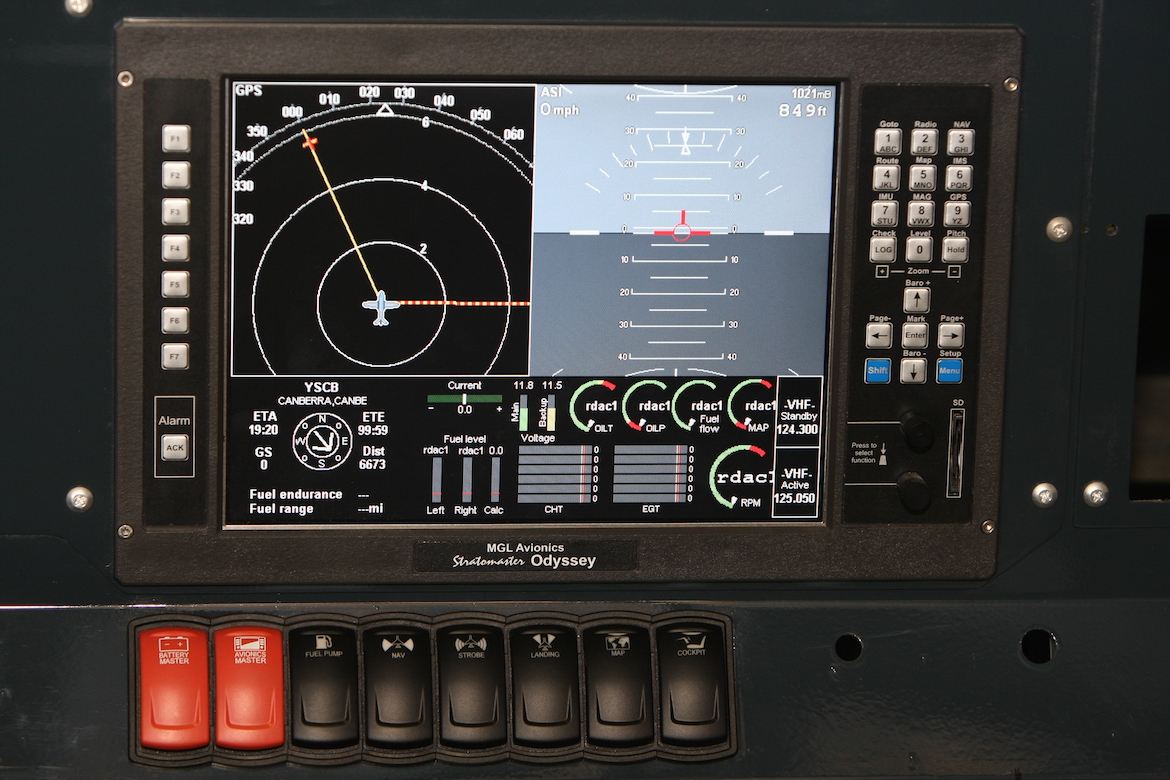
Up front, the test flight aircraft is powered by a 120hp (89kW) Jabiru 3300 engine. Currently the Jabiru 2200, 3300, Rotax 912 and Continental O-200D powerplants are available. With this range of engines burning around 18 litres per hour, the 120 litre fuel capacity offers six and a half hours endurance at 115kt. This horse has long legs and is equally at home in the circuit or going cross-country.
But looming very large on the horizon for the Brumby is the new Lycoming IO‑233-LSA engine. The Lycoming promises to be a tremendous match with the Brumby airframe and an engine that will satisfy the recreational pilot and flying school owners alike.
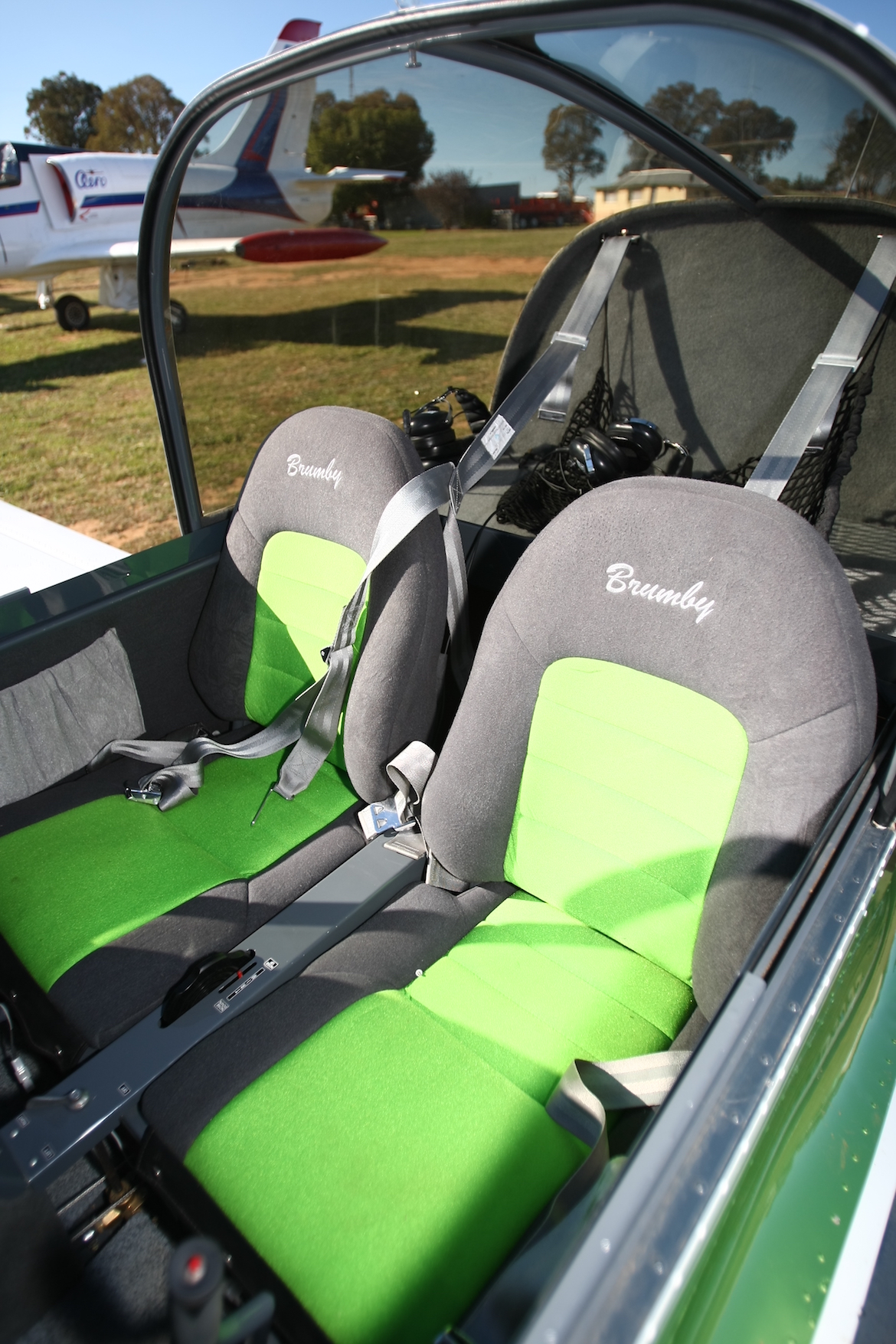
Wild Horses
The Brumby’s canopy slides forward to allow easy access, having stepped onto the wing. Once seated, there is an amazing amount of room. Sitting next to Paul Goard, the designer’s son and another driving force in this family company, there is more than adequate room; and Paul is not a small lad.
The cockpit is wide and by virtue of a centre console housing the trim wheel and fuel selector, both occupants have a degree of personal space not afforded in the “shoulder-rubbing” Cessna 152. Similarly, the canopy clearance overhead is enough to take a 2m giant.
Closing the canopy, the two halves form a structural roll cage and are secured by a simple locking system, which is in company with a red-handled emergency exiting system. Immediately aft of the seats is a hat shelf to secure those lighter items needed in flight, while heavier items are housed in an easily accessible compartment behind the seats where they can’t fly around. Common sense once again.
All controls are well at hand once you are strapped in with the standard four-point harness. The fuel selector is central and has left, right and off selections for training students in the vital skill of fuel management.
The aircraft are increasingly equipped with state-of-the-art digital instrumentation, but the classic analogue format is also available for those who choose to take the traditional road. In both forms the layout is clean and accessible.
Seats are adjustable fore and aft to position the pilot relative to the rudder pedals which also control the steerable nosewheel and provide braking via conventional toe brakes. The primary flight control device is a central, floor-mounted control “stick” which not only possesses sound flight characteristics, but frees the instrument panel and switches from the clutter of a control wheel.
Interconnected with the trim system, the stick sits at neutral when the trim is set in the same manner. This serves as a secondary check for the trim setting prior to takeoff as an aft leaning control stick physically prompts the pilot to check the trim.
All in all, as the canopy slides shut and the Brumby is readied for start, one feels very comfortable in this well-finished cockpit. The absence of formed plastic interior panels and the clean, sturdy design gives an air of durability that suggests an ability to shrug off the hard yakka of flying school operations. [vc_gallery interval=”0″ images=”75608,75607,75606,75605,75603″ img_size=”750×420″ title=”A look at the Brumby LSA (Images from Paul Sadler)”]
Taking Flight
Engine start and taxi is straightforward. The direct-steering nosewheel and short span make manoeuvring in the apron area simple, and after completing engine run-ups and pre-takeoff checks we await only a landing aircraft before back-tracking for departure via Cowra’s Runway 15.
Advancing the throttle, the lightweight Brumby accelerates rapidly and feels ready for flight after only about 200m. I give the horse her head and she lifts off smoothly at 50kt and climbs away at an impressive rate while increasing to 70kt indicated and a conventional climbing attitude out the window.
From this first phase of flight the nature of this aircraft is apparent and it is clear this a thoroughbred. It is somewhat lighter on the controls than the traditional trainers and calls to be flown with finesse rather than fist. However, while it is light on the controls, it is stable when the attitude is set.
Part of this responsiveness is undoubtedly due to the control surfaces being actuated by pushrods as opposed to cable driven. The controls are well harmonised and the rate of roll is well proportioned to the control stick input. Fundamentally, you get what you expect without any surprises, as long as you fly the aeroplane and don’t wrench it around the sky.
With the attitude and trim set, the aircraft will sit there nicely, effortlessly holding altitude. On climb and in turns alike, light but positive rudder input is all that is required to maintain balance and a failure to do so in this aircraft is untidy rather than ugly.
Throughout the airtest, the climb rate was very respectable and we were able to hold station with the camera aircraft with relative ease. In observing the stall, the Brumby demonstrated relatively benign characteristics.
There is an easily identifiable airframe buffet approaching the stall with no obvious tendency to drop a wing as the stall is reached at 35kt in the clean configuration. Given this one figure alone, the safety margin in slow speed flight and on approach with flap extended is more than adequate.
In the circuit and slowed down, the aircraft is stable and provides an excellent training platform with tremendous visibility. On approach, the aircraft has to be positively flown which is an admirable quality in a trainer. The stick forces are light, so you don’t get the same degree of prompting through the control column as the speed varies as you do in some other types, and lowering the nose will see the aircraft accelerate quickly on base if the attitude and drag are not managed.
Flaps can be extended to 40 degrees, though with those barn doors extended the Brumby will almost have to be dragged to the airfield. With an intermediate stage of flap setting and a target speed of 65kt on final, the aircraft is a delight to fly on approach. This aircraft will teach the student to fly an attitude and trim the aircraft very early on in the process and prepare them well for more advanced types.
Over the fence and landing the aircraft is very straightforward. With such a low stall speed, there is a significant margin as the aircraft decelerates in the flare. As such, the aircraft maintains good control response throughout the landing manoeuvre as the throttle is retarded.
The attitude change to the touchdown attitude is subtle and the low-sided canopy offers plenty of cues in the peripheral vision. Students and low time pilots alike should find this aircraft friendly to bring back to earth.
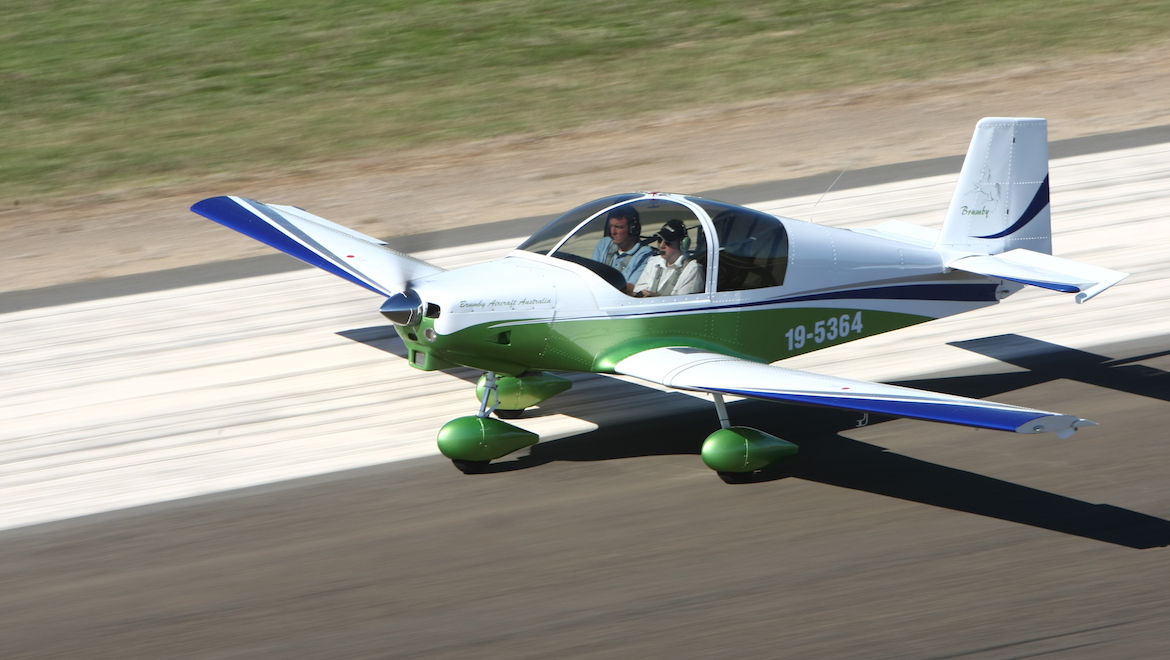
How Do They Do It?
Having flown the Brumby, I was absolutely impressed not only by its airborne characteristics, but by its performance, range, uplift and design. Having flown Cessnas and Pipers extensively, it almost defies my belief that two 85kg people can fly for six and a half hours at 115kt – yet this is the case with the Brumby.
Much of this must be directly attributable to the design and manufacturing philosophy of Philip Goard and his family-based team. The entire operation seems well suited to its Cowra base as there is a no-nonsense air of Aussie rural practicality.
This is combined with high tech computer aided design (CAD) and a modern CNC router to hone and punch the metalwork with precision. The whole process through to the impressive paintshop is onsite, which allows any part to be manufactured and on its way to the owner in days, without an exchange rate to be seen.
By owning the business 100 per cent, the Goards control the business and its direction 100 per cent. They are not answerable to stakeholders or slowed down by boards. This is probably central to why the Brumby has evolved from the Go Air trainer to its current form so smoothly.
And the evolution will continue as the Goards move forward with the Brumby LSA 610 High Wing, whose prototype is already starting to take form. Again, common sense wins out with the high wing Brumby, as aft of the cockpit and forward of the firewall it will be common with its low wing stable-mate.
A Bright Future
The Brumby has grown from its humble beginnings through common sense and a practical response to feedback, which is actively sought. The looming Lycoming engine is yet another step on this aeroplane’s journey and one that promises to be a major landmark.
The Brumby is not only a standout example of an Australian venture doing a tremendous job, it is a very good aeroplane. It is equally suited to the LSA pilot, the dedicated flying school, or the retiree who wants to see Australia from the air. Its performance envelope makes all of these tasks possible and its design allows them to be done safely and in comfort.
The Brumby is an aircraft that has come of age as retiring fleets are passing their use-by dates. Australian designed and built, it is well positioned to step into the shoes of its ageing predecessors. There are green pastures ahead for this Aussie thoroughbred.
VIDEO: A look at the Brumby LSA in a 2009 video from the Brumby Aircraft Australia YouTube channel.
This story first appeared in the June 2009 edition of Australian Aviation. To read more stories like this, subscribe here.












